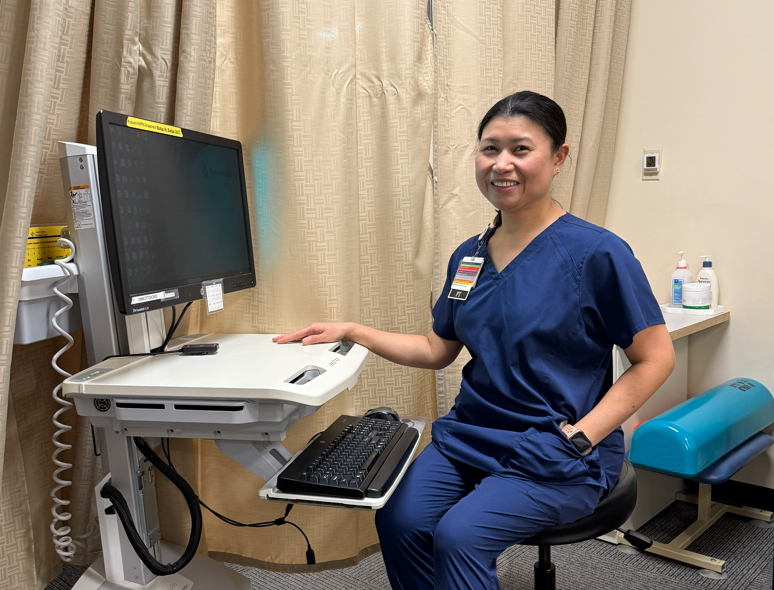Like a shadow lengthening at sunset or a dark cloud slowly obscuring the sun, the novel coronavirus has the potential to spread silently before positive tests confirm diagnoses in people infected with the virus.
To help get ahead of the curve and prepare Sutter’s integrated healthcare system to manage a potential surge in infections or a re-emergence of novel coronavirus later this year, Sutter leaders are collaborating with researchers and statistical analysts to track infection rates in the Sutter patient population and predict the course of viral spread.
Sutter researchers are experts in data analysis who leverage current and new methods aligned with Sutter privacy safeguards. Their work helps strengthen Sutter’s response to the pandemic. Here’s how:
1. TRACK THE VIRUS: Sutter Health Biobank
Sutter researchers are exploring ways to detect the novel coronavirus before it spreads further, by assessing exposure rates in Sutter’s patient population. This effort is led by Gregory Tranah, Ph.D., Scientific Director of CPMC and Director of Sutter’s Center for Precision Medicine Research.
The COVID-19 Seroprevalence and Surveillance Study will identify blood and serum samples from Sutter Biobank volunteer participants that show antibodies against the novel coronavirus. “Seroprevalence” means the level of a virus or other pathogen in a population, as measured in blood.
“Understanding the surge of infection rate and spread is an important part of preparedness. Epidemiological studies of emerging COVID-19 infections can help determine the burden of disease, develop better estimates of morbidity and mortality, and guide return-to-work and personal-safety decisions based on exposure history,” says Dr. Tranah.
The Sutter Biobank has been enrolling patient volunteers to give blood samples when a blood draw is ordered for clinical reasons. From early December 2019 through March 21, 2020 over 700 Biobank participants had blood samples drawn and archived.
“These samples provide Sutter with a unique opportunity to perform population-based surveillance of COVID-19 exposure when the virus began to spread in Northern California. They represent highly diverse patient data from Sutter’s integrated network. This is meaningful information that will allow us to determine the rate and timing of peak exposure and leveling of exposure rate,” says Dr. Tranah.
“Further, we can use the Biobank samples to find potential evidence of a resurgence of COVID-19 infection this fall. Earlier detection means we can plan for early containment of the virus.”
2. MONITOR VIRAL SPREAD: COVID-19 Surveillance
Researchers and statistical analysts at Sutter’s Center for Health Systems Research (CHSR) are collaborating with Sutter’s Enterprise Data Management, Informatics, Information Services and other operational departments to perform much-needed surveillance on the COVID-19 pandemic and provide insights to Sutter leaders.
Each morning, the CHSR team prepares reports for all Sutter hospitals on the number of patients who have tested positive or are suspected of being positive for COVID-19. They also track total hospital capacity and intensive care unit bed occupancy to help front-line staff with surge-capacity planning.
“Surveillance helps us understand how COVID-19 may be spreading amongst the patients we care for and our healthcare workers, and how we can prepare for potential surges in viral infection rates in the coming months,” says Alice Pressman, Ph.D., MS, Co-Director of CHSR.
Dr. Pressman and her colleagues at CHSR are developing the COVID-19 Universal Registry for Vital Evaluations (CURVE)—a centralized resource for research and quality improvement activities for COVID-19 disease surveillance and modeling, as well as health services and epidemiologic analyses.
“The registry will allow us to conduct research to assess the impact of COVID-19 on the healthcare system, Sutter patients, and our community of employees and healthcare workers,” says Dr. Pressman.
This registry develops the structure for the minimum necessary data to be used for each project, securely within the Sutter network. In turn, the knowledge gained can help to inform patient care and operations as Sutter continues to face COVID-19.
In support of Sutter’s Advancing Health Equity initiative, the CHSR team studied the demographics and clinical characteristics of COVID-19-infected individuals and their outcomes, which helped identify patient subgroups that may be more vulnerable to the disease. Early results indicate there may be inequities by sex, race, ethnicity and socioeconomic status.
“Research during a pandemic is vital to determine which parts of our communities and sub-groups of patients are most affected, so that we can allocate resources and care for our most vulnerable patients,” says Dr. Pressman.
3. A MATHEMATICAL CRYSTAL BALL: Statistical modelling to help predict the future of viral spread
One of the challenges of the COVID-19 pandemic is that scientists don’t fully understand the impact of the virus or its prevalence in our communities.
“One way to help answer these questions is through statistical modeling,” says Dr. Pressman. “We can use infectious-disease models as tools to help us predict the future of the novel coronavirus spread and the potential impact of social distancing and containment efforts on flattening the curve.”
Dr. Pressman and her team are collaborating with researchers from the Institute for Health Metrics and Evaluation (IHME) at the University of Washington to understand the models IHME has published for California state COVID-19 data. “We hope to apply these models to our system to help us allocate healthcare resources and make decisions about future containment efforts.”
Data crunching to help halt a pandemic:
Surveillance is the systematic collection, analysis and interpretation of health-related data. For surveillance of the novel coronavirus and COVID-19, Sutter is using surveillance systems to monitor COVID-19 disease across the system. Surveillance and biobanking can help:
• Monitor the spread and intensity of COVID-19 disease
• Understand disease severity and the spectrum of illness
• Understand risk factors for severe disease and transmission
• Monitor for changes in the virus that causes COVID-19
• Estimate disease burden
• Produce data for forecasting COVID-19 spread and impact
• Improve patient care and help improve Sutter’s response to the pandemic





